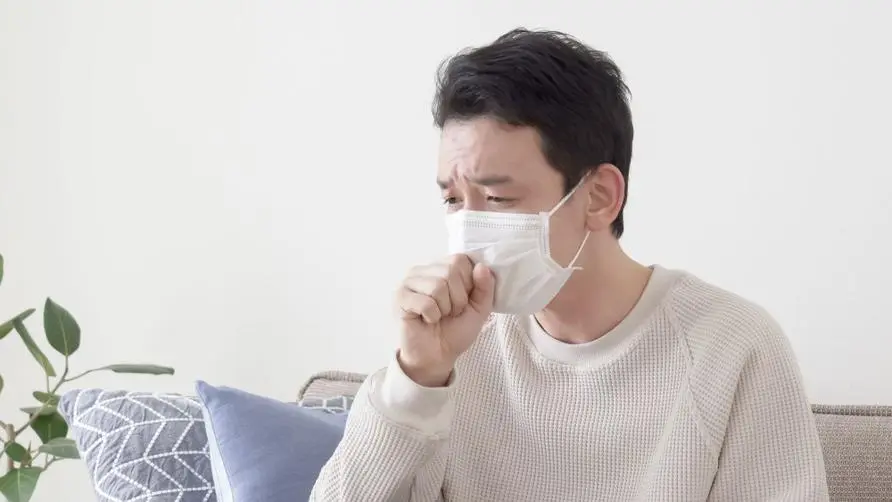Will "superbugs" dominate the post-COVID era? Experts: 33,000 lives may be lost every year

Experts predict that antibiotic-resistant bacteria will kill 33,000 people every year in the future after the COVID-19 epidemic
The COVID-19 epidemic has lasted for more than three years, and a fourth wave of the pandemic has recently emerged in Taiwan. The threat of the new coronavirus is not far away, and the brewing invisible storm: the prevalence of “antibiotic-resistant epidemic bacteria” cannot be ignored. Once the epidemic is combined with certain antibiotic-resistant bacteria, the hospitalization time may be extended by 2 to 3 times. If drug-resistant bacteria are ignored, it is estimated that in 2050, 33,000 people will die from infection every year in Taiwan, exceeding the top six cancers (lung cancer, liver cancer, intestinal cancer, breast cancer, prostate cancer and oral cancer) in Taiwan in 2021 The total number of people.
Could drug-resistant bacterial infections be a bigger threat than the new coronavirus? Professor Qiu Zhengxun from the Department of Pediatric Infectious Diseases at Linkou Chang Gung Memorial Hospital pointed out that a 51-year-old female patient was previously admitted to the hospital because of fever, cough, and body pain. She was diagnosed with the new coronavirus. The X-ray examination showed bilateral lung infiltrates. Her respiratory distress continued to worsen during hospitalization. , transferred to the intensive care unit, and finally intubated.
Unexpectedly, during the treatment, I was infected with Pseudomonas aeruginosa, Klebsiella pneumoniae (also known as KP bacteria, Klebsiella pneumoniae) in the “carbapenem-resistant Enterobacteriaceae (CRE)”, which used to be called “superbugs”. At one point, he developed critical symptoms such as sepsis and low kidney function. Fortunately, he was finally out of danger after changing antibiotic treatment.
Is the prevalence of antibiotic-resistant bacteria increasing during COVID-19? A 12-year-old boy survived after having “continuous fever for a month”
International research shows that since the outbreak of the COVID-19 epidemic in early 2020, the prevalence of some drug-resistant bacteria has increased by about 2 times; and in Taiwan, Chairman Wang Fude of the Taiwan Infectious Diseases Society said that according to the latest quarterly surveillance of the Infection Control and Drug Resistance Surveillance Management System Reports show that the proportion of drug-resistant pathogens detected in hospital intensive care units generally increased during the COVID-19 epidemic.
Chairman Wang Fude said that the proportion of drug-resistant pathogens has increased significantly in the intensive care units of regional hospitals. For example, the proportion of specific pathogens detected in carbapenem-resistant Pseudomonas aeruginosa increased from 14.3% in 2013 to 2022. The 17.2% increase in the second quarter was 4.9% compared with 2021. It is speculated that this is related to the insufficient supply of new antibiotic drugs and the failure of alternative drugs to meet expectations.
There may be a risk of antibiotic-resistant bacteria not just in hospital ICUs, but in the community as well. Professor Qiu Zhengxun pointed out that a 12-year-old boy recently went to the emergency room for treatment due to right buttock pain and intermittent fever for 4 days. The examination revealed that he was infected with multi-drug-resistant Staphylococcus aureus, which not only caused the boy’s pulmonary embolism, but also combined with purulent Hip joint abscess, after one month of medical treatment and surgical treatment, I was able to be discharged home.
Are drug-resistant bacteria as lethal as deadly cancer? Six globally recognized “escape bacteria” may have no cure
Professor Qiu Zhengxun pointed out that if the prevalence of bacterial resistance is allowed to continue to worsen, it is estimated that by 2050, 10 million people will die from drug-resistant pathogenic infections every year around the world, equivalent to the number of people who die from cancer throughout the year; Taiwan will also estimate that every year by 2050 More than 33,000 people will die from this, which is equivalent to the sum of deaths caused by the top six fatal cancers in 2021, including lung cancer, liver cancer, bowel cancer, breast cancer, prostate cancer and oral cancer, and more than three times the number of deaths from lung cancer.
The aforementioned Staphylococcus aureus, Klebsiellapneumoniae, and Pseudomonas aeruginosa, together with Enterococcusfaecium, Acinetobacter baumannii, and Enterobacterspecies, collectively known as “ESKAPE” based on their English prefixes, are among the six globally recognized drug-resistant bacteria that are in danger of being unavailable and need urgent attention.
The fatality rate of pneumonia infection is high and it is urgent to stockpile new antibiotic drugs
How can we help cool down the growing public health crisis of drug resistance? The United Nations calls on countries to increase investment in innovative and affordable antibiotic drugs to ensure the deployment of powerful weapons against superbugs. The American Chamber of Commerce in Taiwan recently published the “2023 Taiwan White Paper” and also mentioned that in addition to insufficient international antibiotic supply, the price of some drugs in Taiwan is too low, the pharmaceutical industry is unable to continue to supply drugs, or even withdraws from the market, which may also be the cause of the drug shortage crisis. Therefore, it is recommended that the government rewards the introduction, research and development, and innovation of antibiotics. Health insurance payment rules should provide appropriate rewards. At the same time, it should review drug pricing policies and protect existing antibiotics to work together to fight superbugs.
The Taiwan Infectious Diseases Society and the Taiwan Infection Control Society also agree that Taiwan should speed up the review of new antibiotic drugs and rationally include them in health insurance, and promptly replenish infection professionals. However, compared with more and more new cancer drugs that have been released in recent years, the research and development of new antibiotic drugs has gradually slowed down in recent years. Chen Yijun, chairman of the Taiwan Infection Control Society, said that the World Health Organization’s 2020 report stated that only 12 antibiotics have been approved since 2017.
Chairman Chen Yijun further pointed out that a previous foreign survey of oncologists showed that if the drug resistance problem continues to worsen, future prognosis including chemotherapy, stem cell transplantation, etc. may be affected. This survey of 100 British oncologists , nearly 30% (28%) of doctors believe that within 5 years, cancer treatment options may be limited due to drug resistance.
Is the war against antibiotics like a baseball game? Increased bacterial resistance to antibiotics, watch out for winning bets turning into losing bets
Chairman Wang Fude said that the situation of antibiotic resistance is like a “baseball game”: antibiotics are like pitchers and bacteria are like hitters. When strong pitches with high strikeout rates are abused and appear frequently, the pitch will be penetrated by hitters and winning pitches will be lost. Will become a loser. Another situation is that no matter how strong the pitcher is, the ability of the outfielders and outfielders who shoulder the heavy responsibility of backline defense is too poor. For example, patients with relatively low immunity such as those in intensive care units and multiple tubes on their bodies, no matter how good the pitcher (strong pitcher is) Effective antibiotics may also fail, causing the batter (bacteria) to hit the bases frequently and score. In this case, emergency relief from a pitcher with special expertise and symptomatic treatment is required.
The treatment of acute infection is a battle of time, emphasizing rapid symptomatic treatment. However, the current clinical situation is often that the patient is already lying in the ward. The doctor knows that there are new drugs that are suitable for the disease, but cannot use them due to drug license review and the speed of health insurance payment, so he has to Older or alternative medicines that may be prescribed less effectively and at a lower price. In order to kill the germs, doctors have to increase the dosage of old drugs or alternative drugs. In the long run, this may also lead to a vicious cycle in which bad money drives out good money, drug resistance increases, and medical expenses increase.
Chairman Chen Yijun further emphasized that the treatment of infectious diseases attaches great importance to the four major principles of individual differences, solving the root cause, prescribing the right medicine, and adapting measures to the situation. Even if the same type of bacteria is used, not everyone is suitable for the same antibiotic. In outpatient clinics, we often encounter patients who are pregnant at the same time, suffer from liver and kidney diseases, or allergies, and have obvious side effects when using existing drugs; while family members search online and find that there are better new drugs abroad, but when they ask the doctor, they get a helpless reply that “Taiwan has not introduced them.”
Reserve new antibiotic drugs + professional manpower to create a win-win situation for patients, medical care and society
Currently, the Taiwan Society of Infection Control and the Taiwan Society of Infectious Diseases Medicine have jointly proposed the “Antimicrobial Agent Management and Infection Control Quality Improvement Plan”. In addition to introducing a patient-centered integrated care plan at the medical treatment level, through “high-level control “Antimicrobial Use and Antimicrobial Resistance Care Scale” provides complete personalized infection management for patients with highly regulated antimicrobial agents and incorporates professional assessment into health insurance payment items based on serious infectious disease care assessment.
At the same time, in addition to meeting the evaluation standards in terms of human resources structure, medical institutions can also be rewarded for formulating management plans and internal reward systems, or formulating talent recruitment, training, and retention plans for infection control personnel to implement the infection control profession. At the same time, it reduces the overall medical cost. According to statistical data, research is expected to save 1.98 billion yuan in antimicrobial drug expenses, creating a win-win situation for patient health, medical safety, and social stability.
Further reading:





